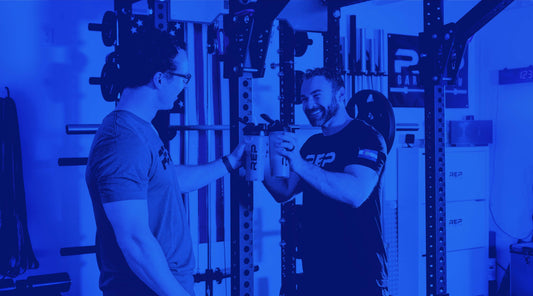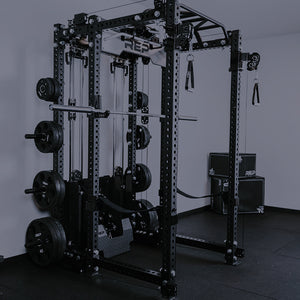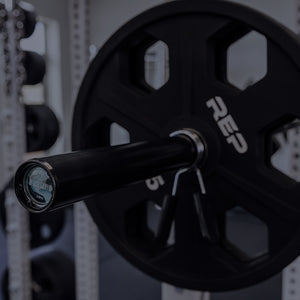
We sat down for a chat with a car-designer-turned-gym-equipment-designer to hear about his process, inspiration, and how Kleva Built® came to be.
Let's get up close with Steve Kleva, the featured inventor of the REP® x Kleva Built™ attachments.
Q&A with Kleva Built™'s Steve Kleva
We sat down with Steve Kleva to find out how and why he got into making some of the most innovative fitness equipment on the market.
What is your background in the fitness world?
I never touched weights until I graduated high school. I eventually got into bodybuilding and started competing and did fairly well winning the overall at an NPC show as a natural.
Eventually, I needed to take time off for improvements without losing my competitive edge, so I got into powerlifting. I competed in a total of nine meets until chronic issues with my body forced me to take a break. I decided to put my focus more toward creating as it’s something I’ve always been passionate about. I merged two of my passions, fitness and fabrication and started thinking: There is a lot of improvement to be made to the deadlift jacks that are currently available.
What’s your fabrication background?
I went to trade school and have an automotive and fabrication background. I worked in the auto industry for over 10 years, building cars and designing automotive components. I specialized in late model GM performance as well as custom fabrication.
What was the inspiration for the deadlift jack?

During my time powerlifting, I was looking for a portable jack and there wasn’t anything available that was light and compact. I thought there should be a more efficient deadlift jack that was lighter and more portable, so I began experimenting on my own. I had no intention of creating a marketable product and abandoned/revisited the project over the course of a couple years. I was just creating a solution to a problem.
Eventually, I had around seven to eight revisions before the final (version 1) design. My wife, Ciara, encouraged me to take it to market. Over the course of a weekend, she built the website, we opened orders, and the response was beyond what I/we had imagined.
Our flagship product (which gave Kleva Built its foundation that one weekend in 2018) is called the Genesis™ jack: It can fit in your gym bag, weighs under 2lbs and is very strong
What came next?

Next came the close-grip Atlas™ attachment. I asked myself, “How can I combine two attachments?” and integrated the two, while ensuring it remained as light as possible.
The multi-grip variation followed. This was the same concept; just widened for more grip variations.

The tricep attachment came later and is a premium, lightweight design as well. It is high-quality but also lighter than most others with a very simple design.

This led to the landmine attachment, which made sense because I created a lot of attachments with landmine capabilities. Existing landmines were so basic, I felt there was more potential for an improved design.
How did your experience designing cars inform the gym equipment you designed?
Most anything “high performance” is strong and light, two characteristics that tend to directly impact one another. I noticed a lot of existing equipment is overbuilt and heavy, especially cable attachments; you pull out the pin and it falls down from above and “bonks” you on your noggin. Aluminum is very strong if designed accordingly. I wanted to design products as compact, strong, and light as possible.
What role has REP played in this process?

As a small company of two we lacked a lot of the resources larger companies have. As we grew, it became more challenging to keep up with demand. Our main priority is the end result: customer satisfaction and user experience. “Capping” our growth allowed us to maintain this but also limited further growth.
Working with REP has been great. They take me seriously and stick to their word. I’ve spoken with some other companies and they would tell me what I wanted to hear, but their business practices did not align with how I like to operate. REP has felt more like family.
REP has industrial designers, engineers, product managers – it's organized, with processes, steps, and stages. There’s a lot of organization and flow and a clear path to the end result. It was nice to go through the steps and learn what more I can do in the design process to make everything more successful.
REP really stayed true to my ideas. That was one of my main concerns. We had to change some things – little visual changes -- but the designs remained the same. It’s the same piece, but made from a different manufacturer and with a slightly different look.
What drives/inspires you? Where do you go when you need fresh inspiration?
What inspires me is the negative space. What doesn’t exist? What is the void that
needs to be filled? What’s a problem that needs solved? This is the main reason I limit my exposure to products designed by other companies. You can gain influence by exposing yourself, but I feel it contaminates creativity, at least for me. I’m not interested in creating another version of something else but ones very unique to themselves. I enjoy creating in isolation.
What’s next for Steve Kleva and Kleva Built™?
The part of this process I enjoy the most is the design. In the past, I had to handle just about every facet of the business, so it’ll be nice to relinquish those and focus more on design, as well as freeing up more time with my family. I have five to six more designs I’m currently working on, and we are excited for continued collaboration with REP.

NEWSLETTER SIGNUP
Product launch information, promotions, blogs, and REP news.







